Author
Aditya basnet
Jun 14, 2025
Posts by Aditya basnet
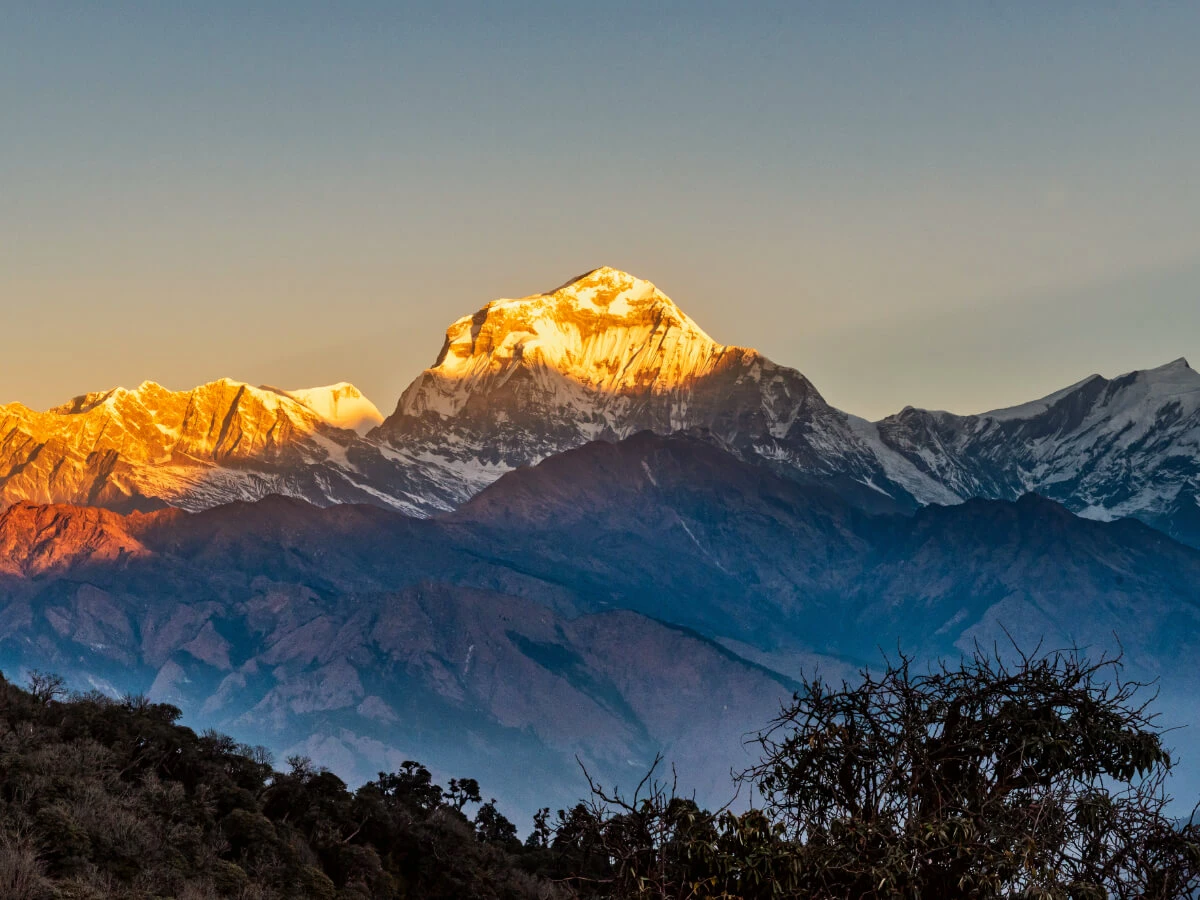
Ghorepani Poon Hill Trek A Short and Easy Walk in Nepal
What is the Ghorepani Poon Hill Trek The Ghorepani Poon Hill Trek is a short and easy trek in the Annapurna region of Nepal. It is perfect for beginners families and children. This trek gives you big mountain views nice villages and beautiful sunrises without needing to walk for many days. You will walk through green forests and stay in small villages. You will also see the sun rise over the tall snowy mountains from a place called Poon Hill. Ghorepani Poon Hill Tre Where is Poon Hill Poon Hill is in the Annapurna region in the west of Nepal. It is near a small village called Ghorepani. From the top of Poon Hill you can see many big mountains like Mount Annapurna Mount Dhaulagiri Mount Machapuchare Fishtail The view is best early in the morning during sunrise. Why Choose the Ghorepani Poon Hill Trek Here are some great reasons to pick this trek It is short and easy You get beautiful mountain views You see the sun rise over the mountains You walk in rhododendron forests You meet friendly local people It is good for families and kids You do not need a special permit You sleep in teahouses with warm beds and hot food Best Time to Do the Trek The best months to do this trek are March to MaySeptember to November In spring March April May you will see rhododendron flowers everywhere. In autumn September October November the sky is clear and blue with the best mountain views. How Long is the Trek The trek usually takes four to five days. You can also add or skip a day based on how fast you walk. You walk for about four to six hours each day on easy trails. You do not go very high so it is safe for most people. Trek Route Day by Day Here is a simple day by day plan Day One Drive from Pokhara to Nayapul then walk to Tikhedhunga or UlleriDay Two Walk to Ghorepani through forests and villagesDay Three Early morning climb to Poon Hill for sunrise then walk to TadapaniDay Four Walk to Ghandruk village and enjoy the viewsDay Five Walk back to Nayapul and drive to Pokhara You can also do this trek in the opposite direction or add extra nights in villages. What Will You See on the Trek This trek gives you many beautiful things to see like Snow covered mountains Green hills and deep forests Rhododendron flowers in spring Sunrise over Annapurna and Dhaulagiri Friendly Gurung and Magar villages Waterfalls and small rivers Colorful prayer flags and old temples The view from Poon Hill is the main point of the trek. It is one of the best sunrise spots in Nepal. How Difficult is the Ghorepani Poon Hill Trek The trek is easy to moderate. Anyone who is healthy and can walk for a few hours a day can do it. Children and older people also enjoy this trek. There are many steps to climb on the first day to Ulleri village. But if you go slow and rest often it is not very hard. No need for climbing tools ropes or special training. Just bring your smile and strong legs. Where Do You Sleep and Eat You will stay in teahouses. These are small guesthouses made by local people. They give you A warm room and clean bed Hot food like dal bhat noodles or soup Tea coffee and water Blankets and lights The rooms are simple but cozy and safe. How Much Does the Trek Cost This is a low cost trek. Here is a basic idea Transport from Pokhara and back about twenty to thirty dollars Food and stay about twenty to twenty five dollars a day Guide or porter optional around twenty dollars a day Permits TIMS and ACAP about twenty to thirty dollars So the total cost is about two hundred to three hundred dollars if you do it in a simple way. Do You Need a Guide You can do this trek alone or with a guide. A guide is helpful if You want to learn about local culture You want someone to help with bags or directions You feel safer with a local friend A porter can carry your bag so you can walk freely. If you are new to trekking or with family a guide is a good idea. What to Pack for the Trek You do not need too much. Keep your bag light. Bring Warm clothes jacket and gloves Trekking shoes Water bottle and snacks Sun hat sunglasses and sunscreen Toiletries and medicine Camera or phone If you go in winter bring extra warm layers. How to Reach the Starting Point First you must go to Pokhara. You can reach Pokhara from Kathmandu by bus or plane. From Pokhara you drive to Nayapul or Hile to start the trek. The drive takes about one to two hours. Local People and Culture On this trek you will meet Magar and Gurung people. They are kind and smiling. They will welcome you with a namaste and maybe share their food or stories. You can see Stone houses with tin roofs Old temples and prayer flags People wearing colorful clothes Local music and dances If you want you can join in and learn a local song or dance. Wildlife and Nature This trek is full of trees birds and flowers. You may see Monkeys Mountain goats Rhododendrons in spring Many birds like eagles and pheasants The forests are fresh and green and full of life. Why is the Ghorepani Poon Hill Trek Special Here is why this trek is very special It is short and easy It has one of the best sunrise views in Nepal It shows you real village life It has safe trails and friendly people It gives you big mountains in a short time This trek is good for First time trekkers Families with children School groups Busy people with little time Tips for the Trek Here are some easy tips Start early each morning Drink water to stay strong Walk slowly and enjoy the views Smile and talk to local people Take pictures but also enjoy with your eyes
Travelling
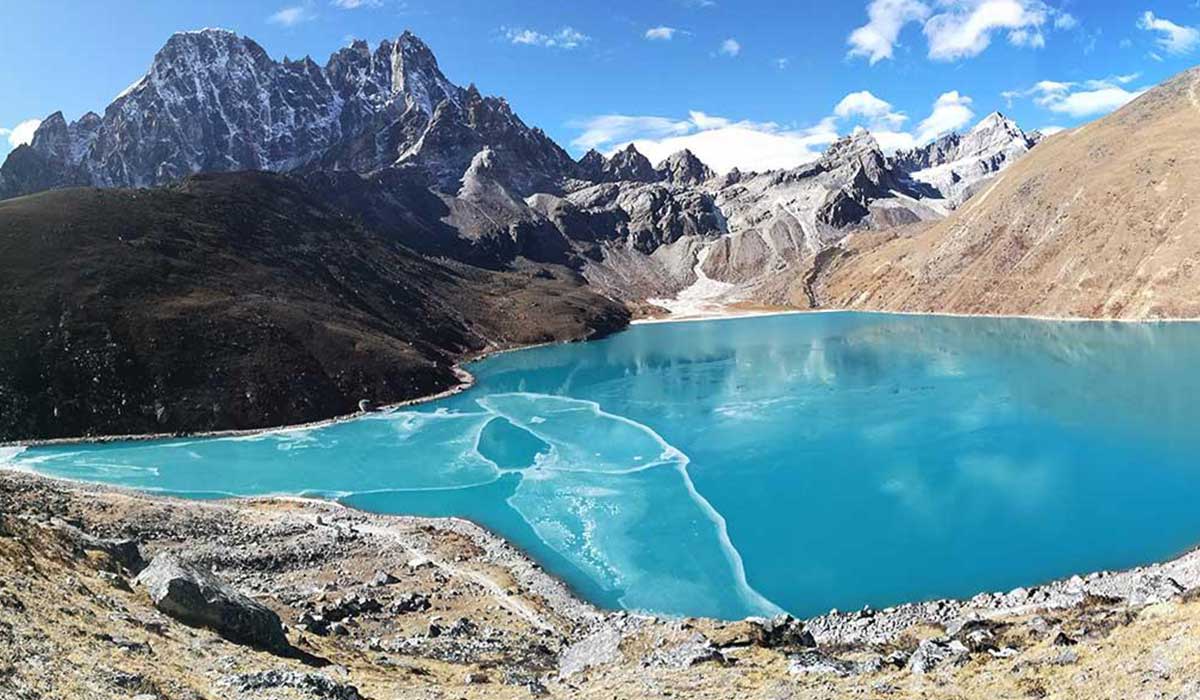
Gokyo Lakes Trek a Peaceful Adventure in Nepal
What is the Gokyo Lakes Trek The Gokyo Lakes Trek is a beautiful trek in the Himalayas of Nepal. On this walk you will see blue lakes snowy mountains and peaceful villages. It is part of the Everest region but it is less crowded than the Everest Base Camp Trek. This trek is good for people who like nature peace and quiet beauty. Gokyo Trek Nepal Where Are the Gokyo Lakes The Gokyo Lakes are in the east of Nepal. They are inside the Sagarmatha National Park. There are six main lakes. These lakes are the highest freshwater lakes in the world. The lakes are very blue and calm. They sit near big snowy mountains like Mount Everest Mount Cho Oyu and Mount Lhotse. Why Should You Choose the Gokyo Lakes Trek Here are some great reasons to choose the Gokyo Lakes Trek Less crowded than other treks in the Everest area Peaceful and quiet trails Amazing mountain views Beautiful blue lakes Chance to climb Gokyo Ri a tall hill with big views Meet kind local people Safe and good for beginner trekkers Best Time to Do the Gokyo Lakes Trek The best time to go is in Spring season March to MayAutumn season September to November In these times the sky is clear the weather is nice and the views are amazing Avoid going in winter December to February when it is very cold and snowy and in monsoon June to August when it rains a lot. How Long is the Trek The trek takes around 12 to 14 days from Kathmandu and back. You will walk for about five to six hours each day. It is not very hard but you must walk slowly because the air is thin and cold at high places. Trek Route Day by Day Here is a simple day by day plan Day One Fly from Kathmandu to Lukla then walk to PhakdingDay Two Walk from Phakding to Namche BazaarDay Three Rest day in Namche for your body to adjustDay Four Walk from Namche to DoleDay Five Walk from Dole to MachhermoDay Six Walk to Gokyo Village and see the third lakeDay Seven Climb Gokyo Ri then explore the lakesDay Eight Walk back to DoleDay Nine Walk back to Namche BazaarDay Ten Walk to LuklaDay Eleven Fly back to Kathmandu You can add more days if you want to go slowly or explore more places. What You Will See on the Trek During this trek you will see Six peaceful lakes Snow covered mountains Green hills and pine forests Big yaks and mountain goats Prayer flags and old stone houses Friendly Sherpa people and their culture The most popular view is from Gokyo Ri. It is a small mountain near Gokyo Village. From the top you can see Mount Everest Mount Lhotse Mount Makalu Mount Cho Oyu Three of the tallest mountains in the world How Difficult is the Gokyo Lakes Trek The trek is medium difficulty. You do not need to climb with ropes. But you need to walk for many hours every day. The hard part is the thin air at high places. You must drink water rest and walk slowly. Most people can do this trek if they are healthy and active. Where Do You Sleep and Eat You will stay in teahouses. These are small guesthouses run by local people. They give you a warm bed and hot food. You can eat Dal bhat rice and lentils Noodles and soup Potatoes and vegetables Tea and hot drinks How Much Does the Trek Cost The cost depends on what you want. Here is a simple idea Flight Kathmandu to Lukla and backAbout two hundred to three hundred dollars Trekking permitsAbout forty to fifty dollars Food and stay each dayAbout twenty to thirty dollars Guide or porterOptional but helpfulAbout twenty to twenty five dollars a day In total it can cost between eight hundred to one thousand dollars if you do it simply. Do You Need a Guide You do not need a guide for the Gokyo Lakes Trek. But a guide can Keep you safe Show you the way Help if you get sick Teach you about local culture You can also hire a porter who carries your bag. Things to Carry for the Trek Here are some important things Warm jacket and clothes Good trekking shoes Sleeping bag Sun hat and sunglasses Water bottle and snacks Trekking stick Camera or phone Map or guidebook Pack light but take what you need for cold weather and long walks. Is it Safe to Do the Trek Yes the trek is safe for most people. But you must be careful of Altitude sicknessAlways rest drink water and walk slowly Cold weatherWear warm clothes Strong sunUse sunscreen sunglasses and a hat Always tell someone where you are going and travel with a friend or guide if possible. Why is the Gokyo Lakes Trek Special The Gokyo Lakes Trek is special because It is less crowded and quiet The blue lakes are magical The views are huge and clear You can see four very tall mountains You learn about Sherpa life and nature It is a good mix of peace and adventure
Travelling
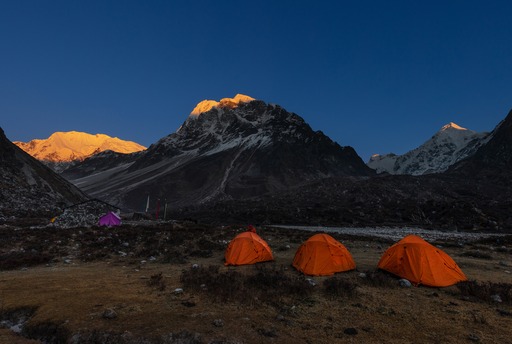
Yala Base Camp Trek: A Simple Adventure in the Himalayas
The Yala Base Camp Trek is a short and easy trek in the beautiful Langtang region of Nepal. It is perfect for beginners and people who love nature. This trek is not too hard and gives you a chance to see big snow-covered mountains, green forests, and happy villages. You do not need to climb a mountain. You only walk up to the base camp of Yala Peak, which stands at about 4,600 meters. From here, you can see many famous mountains like Langtang Lirung, Dorje Lakpa, and even parts of Tibet. yala base camp Where is Yala Base Camp? Yala Base Camp is in Langtang National Park in northern Nepal, close to the border of Tibet. It is about 7 to 8 hours' drive from Kathmandu to reach Syabrubesi, the starting point of the trek. Why Choose Yala Base Camp Trek There are many good reasons to choose this trek. Here are some of them: It is short and easy, great for first-time trekkers The mountain views are beautiful You can meet the Tamang people and learn about their culture You will walk through forests, rivers, and villages You do not need special gear or climbing tools How Long is the Trek The full Yala Base Camp Trek takes about eight to ten days. The number of days depends on how fast you walk and how many rest days you take. Here is a simple plan: Day OneDrive from Kathmandu to Syabrubesi Day TwoTrek to Lama Hotel Day ThreeWalk to Langtang Village Day FourReach Kyanjin Gompa Day FiveHike to Yala Base Camp and return to Kyanjin Gompa Day Six to EightWalk back the same way to Syabrubesi and drive to Kathmandu Some people add an extra rest day at Kyanjin Gompa to help their body adjust to the height. What Can You See There are many beautiful things you will see during the trek: Snowy mountains like Langtang Lirung and Shishapangma Wild animals such as monkeys, red pandas, and mountain goats Forests filled with flowers, especially rhododendrons and pine trees Tamang villages with friendly people Rivers, waterfalls, and glaciers Buddhist monasteries like the one at Kyanjin Gompa Best Time to Visit Yala Base Camp The best time to go on the Yala Base Camp Trek is during spring and autumn. SpringFrom March to May. You will see flowers blooming and enjoy warm weather. AutumnFrom September to November. The sky is clear, and the mountain views are the best. WinterFrom December to February. It is cold and snowy. Only go if you are ready for freezing weather. MonsoonFrom June to August. It rains a lot, and the trail can be slippery. Not a good time for trekking. Food and Stay Along the trail, you will stay in small houses called tea houses. These are simple but warm and clean. You will eat local meals like: Dal Bhat which is rice with lentil soup Potato curry Noodles and vegetable soup Fried eggs and flat bread Warm tea and herbal drinks The food is made by local families with fresh ingredients. People and Culture The people who live in the Langtang region are mostly Tamang and Tibetan. They follow the Buddhist religion. They are very kind, smiling, and respectful. You will see prayer flags, stone walls, and monasteries on the trail. You can also learn how they live in the mountains and what they eat and wear. Is It Safe for Kids and Beginners Yes, this trek is very safe for: Children Families Older people New trekkers Just walk slowly, drink clean water, and listen to your guide. If you feel tired or dizzy, take a rest. It is best to go with a local guide who knows the trail well. Permits You Need To do the Yala Base Camp Trek, you need: Langtang National Park PermitThis lets you enter the protected area. TIMS CardThis card keeps a record of all trekkers in Nepal. You can get these permits in Kathmandu, or your guide can arrange them for you. Packing List for the Trek Here is what you should carry: Backpack Warm jacket, sweater, and pants Gloves, hat, and scarf Trekking shoes Water bottle Towel, soap, and toilet paper Flashlight or headlamp Simple first-aid kit Camera (optional) Do not carry too many things. Keep your bag light. Mobile Network and Internet In some villages, there is mobile signal and Wi-Fi. But the internet is slow. It is a good chance to take a break from phones and enjoy the peace of nature. Cost of the Trek The price of the trek depends on: If you take a guide and porter How many days you trek What you eat and where you stay The total cost is usually between five hundred and eight hundred US dollars. This includes your permits, food, room, guide, and transport. Helpful Tips Walk slowly and rest often Drink clean water Say Namaste with a smile Do not walk alone Do not take things from nature Be kind to animals and local people Respect rules and customs What Makes Yala Base Camp Trek Special This trek is easy, safe, and full of joy. You will see high mountains, meet friendly villagers, and walk in clean nature. It is great for: New trekkers School children Families People who love simple travel Sustainable Travel Tips Help protect the Himalayas: Do not throw trash Use reusable water bottles Stay in local tea houses Eat local food Walk only on the main trail
Travelling
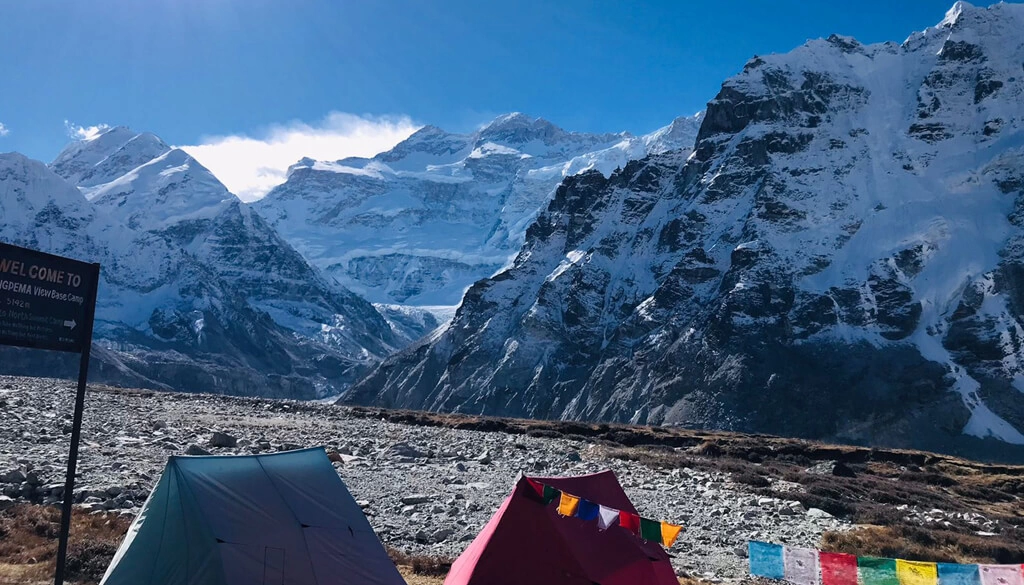
kanchenjunga Base Camp Trek: A Hidden Mountain Treasure
The Kanchenjunga Base Camp Trek is a long and beautiful walk in the far east of Nepal. You will walk through quiet forests cross rivers and see some of the highest mountains in the world. The trek takes you close to Mount Kanchenjunga which is the third highest mountain on Earth. This trek is not crowded like other famous treks. It is perfect for people who love nature and want to explore something quiet and peaceful. kanchenjunga Base Camp Trek: A Hidden Mountain Treasure Where is Kanchenjunga Kanchenjunga lies in the Taplejung District which is in the eastern part of Nepal near India and Tibet. It is part of the Kanchenjunga Conservation Area home to snow leopards red pandas and many birds. How Long is the Trek The trek usually takes twenty to twenty five days. You can visit the North Base Camp the South Base Camp or both. North Base Camp Trek takes about twenty to twenty two daysSouth Base Camp Trek takes about fourteen to sixteen daysBoth Camps takes around twenty two to twenty six days Best Time to Trek Kanchenjunga The best time to trek isSpring from March to May for blooming flowers and great viewsAutumn from September to November for clear skies and colorful trees Avoid trekking in monsoon and winter as the trail can be muddy or snowy Major Highlights of the Kanchenjunga Trek One Remote Trails The Kanchenjunga Trek is peaceful and not crowded like other treks Two Big Snowy Mountains You will see many snow covered peaks such asMount KanchenjungaMount JannuMount KabruMount Rathong Three Green Forests and Flowers In spring the trail is full of red pink and white rhododendrons Four Wild Animals You may seeRed pandasBlue sheepHimalayan black bearsColorful birds Five Mountain Villages You will pass throughTaplejungGhunsaYamphudinTseramPangpemaThe people are friendly and you will learn about Tibetan and Limbu culture Sample Itinerary for North Base Camp Trek Day One Travel to Taplejung from KathmanduDay Two Trek to MitlungDay Three Trek to ChirwaDay Four Trek to SekathumDay Five Trek to AmjilosaDay Six Trek to GyablaDay Seven Trek to GhunsaDay Eight Rest and AcclimatizationDay Nine Trek to KhambachenDay Ten Trek to LhonakDay Eleven Trek to PangpemaDay Twelve Explore North Base Camp and return to LhonakDay Thirteen Trek back to GhunsaDay Fourteen Trek to Sele LeDay Fifteen Cross Sele La Pass and reach TseramDay Sixteen Trek to RamcheDay Seventeen Trek to TortongDay Eighteen Trek to YamphudinDay Nineteen Trek to KhebangDay Twenty Drive to Bhadrapur and fly to Kathmandu Where Do You Sleep and Eat This is a tea house trekYou sleep in small guest houses and eat simple local food such asDal BhatNoodlesSoupPancakesTea and warm drinks What to Pack Warm jacket and sleeping bagRaincoat and trekking bootsWoolen hat gloves sunglassesWater bottleSnacksPassport and trekking permits Permits Needed You needRestricted Area PermitKanchenjunga Conservation Area PermitTIMS Card Guide is compulsoryMinimum two trekkers are needed How Hard is the Trek This trek is moderate to difficultYou walk five to seven hours every dayThe trail goes up and downIt can be cold but very beautifulWalk slow and drink water often How Much Does it Cost The full trek may cost between two thousand to three thousand US dollarsThis includesPermitsGuide and porterTransportFood and guest house stay Best Views and Photo Spots Pangpema for Kanchenjunga viewsRamche for glacier photosSele La Pass for panoramic viewsGhunsa for village and mountain photos Local Culture and People People here follow Buddhism and nature beliefsYou will see prayer flags stone shrines and smiling facesThey speak Tibetan Limbu and NepaliAlways ask before taking photosRespect their customs Why Kanchenjunga Trek is Special It is peaceful and far from crowdsYou see real Himalayan lifeYou support locals by staying in tea housesYou walk in the protected forestIt is a hidden gem Tips for a Great Trek Walk slowlyDrink clean waterTake rest when neededListen to your guideCarry some money as there are no ATMs
Travelling
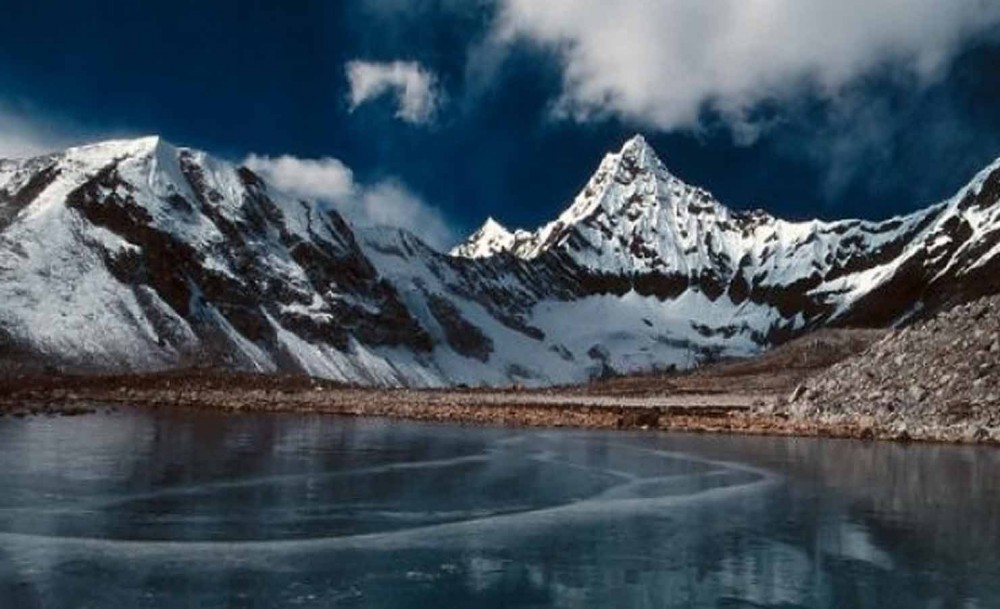
Panchpokhari Trek A Peaceful Walk to Five Holy Lakes
The Panchpokhari Trek is a quiet and beautiful walk in the Himalayas. It takes you to five holy lakes in the Sindhupalchok district of Nepal. This trek is less crowded, peaceful, and filled with natural beauty and cultural wonders. Panchpokhari Trek Why Panchpokhari is Special The word Panchpokhari means Five Lakes. These lakes are holy for both Hindu and Buddhist people. Many pilgrims visit these lakes during the Janai Purnima festival. The area is surrounded by snowy mountains, green forests, and clean air. It is a place for both adventure and spiritual peace. Trek Details Location – Sindhupalchok DistrictHighest Point – Around 4100 metersTrek Duration – 7 to 9 daysTrek Difficulty – Easy to ModerateBest Season – Spring and AutumnStarting Point – Chautara or Bhotang villageEnding Point – Same as starting or via Melamchi route Top Highlights of Panchpokhari Trek 1 Peaceful Lakes The five holy lakes are the heart of this trek. The water is clean and blue, and the lakes are surrounded by high hills and flowers. 2 Mountain Views You can see many big mountains like Langtang, Dorje Lakpa, Jugal Himal, and others. The view from the top is breathtaking. 3 Local Villages You will pass through Tamang and Sherpa villages. The people are friendly and their culture is very rich. 4 Forests and Flowers The path goes through green forests full of pine, rhododendron, and many other plants. In spring, the flowers bloom and make the path colorful. 5 Spiritual Energy The lakes are holy. Many visitors feel calm and spiritually strong here. There are small temples and prayer flags around the lakes. Trekking Itinerary Day 1 – Drive from Kathmandu to ChautaraDay 2 – Trek to Sano OkhareniDay 3 – Trek to Hile BhanjyangDay 4 – Trek to NasimpatiDay 5 – Trek to Panchpokhari LakesDay 6 – Return to NasimpatiDay 7 – Trek back to Chautara or drive to Kathmandu You can also take a different route via Bhotang village, which is shorter and easier. Best Time to Visit The best time to go is during the spring season from March to May, and autumn from September to November. The weather is clear and you can see the mountains and lakes very well. Things to Pack Warm clothes Hiking boots Raincoat or jacket Sunscreen and sunglasses Water bottle Camera to capture the lakes and views Snacks and medicines Is Panchpokhari Trek for You Yes if you love quiet places, nature, and mountains, this trek is perfect. It is also good for new trekkers and families. You do not need any special climbing skills. Travel Tips Walk slowly and drink water often Respect local customs and holy sites Be ready for simple food and beds in the villages Carry your trash back to keep the trail clean
Travelling
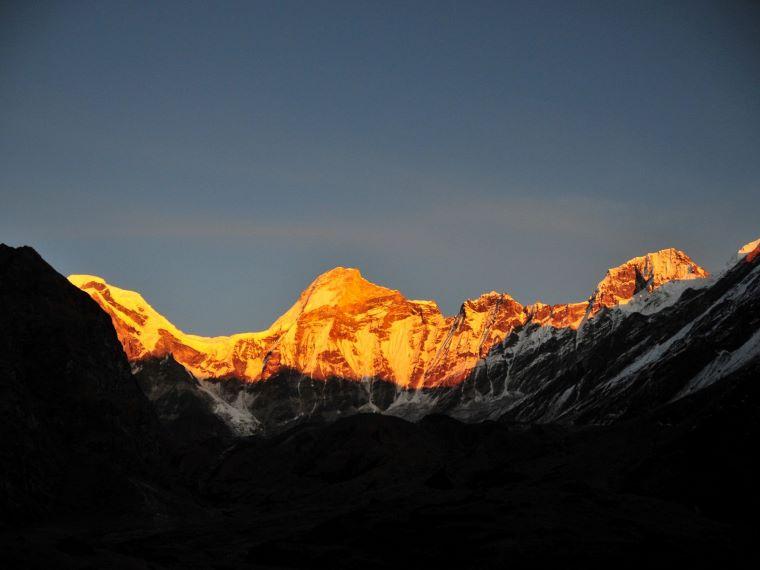
Api Base Camp Trek: A Secret Himalayan Journey in Far West Nepal
The Api Base Camp Trek is one of the most beautiful and least explored treks in Nepal. It takes you to the base of Mount Api which is seven thousand one hundred thirty two meters tall. This tall and stunning mountain is found in the far western part of Nepal. Unlike busy treks like Everest or Annapurna this trail is quiet peaceful and full of nature. You will walk through green forests, clear rivers, and friendly villages. The people here have a rich culture and kind hearts. It is perfect for those who want to explore hidden places and enjoy the true beauty of the Himalayas. Api Base Camp Trek Where is Api Base Camp Located Api Base Camp is in the Darchula District, inside the Api Nampa Conservation Area. This area is very far from big cities like Kathmandu or Pokhara. That is why very few people visit it. The land and air are still clean fresh and untouched. How Long is the Api Base Camp Trek Trek Duration Around twelve to sixteen daysTrek Grade Moderate to ChallengingGood For Adventurers and nature loversMaximum Height Around four thousand meters Best Time to Visit Api Base Camp The best seasons are Spring March to MayAutumn September to November During these months the sky is clear and the weather is perfect. Avoid the rainy monsoon June to August and cold winter December to February. Api Base Camp Trek Itinerary in Simple Words Day by Day Trek Plan Day One Travel from Kathmandu to DhangadhiDay Two Drive to Gokuleshwar in DarchulaDay Three Trek to LatinathDay Four Walk to Mahakali ValleyDay Five Reach Kuti VillageDay Six Trek to MakarighatDay Seven Trek to Api Base Camp and enjoy the amazing viewDay Eight Rest and explore around the base campDay Nine to Twelve Return the same wayDay Thirteen and Fourteen Come back to Kathmandu Major Highlights of Api Base Camp Trek Mount Api View You will see Mount Api, one of the highest mountains in western Nepal. The view is breathtaking, especially at sunrise. Api Nampa Conservation Area A beautiful area with rare animals birds and plants. It is like a living nature museum. Remote Villages You pass through villages like Kuti Makarighat and Latinath. People here live a simple peaceful life. Wildflowers and Forest Trails In spring the trail is full of flowers especially rhododendrons. The forests are green with pine and oak trees. Rivers and Hanging Bridges You walk beside the Mahakali River and cross fun swinging bridges. The river sound is like a peaceful song. Local Culture and People The locals are from groups like Chhetri Brahmin and Byasi. They follow Hinduism and Buddhism. You may see colorful clothes local dances and traditional food. Many speak Nepali, and some understand basic English. You can stay in local houses or lodges and feel their warm hospitality. Food and Stay on the Trek You will eat simple local Nepali food such as Dal Bhat rice with lentilsVegetables from the gardenHomemade picklesLocal herbal tea You will stay in tea houses or village homes. They are basic but cozy. Carry a sleeping bag for warmth. Things to Pack for Api Base Camp Trek Trekking boots Warm jackets and inner clothes Raincoat Hat gloves and sunglasses Water bottles and purifier tablets Walking stick Power bank and camera Some snacks and dry fruits Is It Safe for Beginners Yes it is safe but it needs some walking practice. You walk for five to seven hours daily. It is good for people who love hiking. Hiring a local guide is helpful. There are no big hospitals, so carry a first aid kit and drink clean water. How Much Does Api Base Camp Trek Cost The full trek cost is around eight hundred to twelve hundred dollars depending on your group and plan. Travel and Transport around two hundredGuide and porter about three hundredFood and stay between two fifty to four hundredPermit fees about fifty. Permits You Need To do this trek you need Api Nampa Conservation Area Permit TIMS Card Trekking Information Management System You can get both in Kathmandu or Dhangadhi. How to Get to the Starting Point You have two choices Option OneFly from Kathmandu to Dhangadhi, then take a jeep to Gokuleshwar Option TwoTake a long bus ride from Kathmandu to DarchulaThe ride is bumpy but the views are amazing Why Choose Api Base Camp Trek Quiet and peaceful trails Amazing mountain views Rich village culture Pure nature Great for real adventure lovers This trek gives you more than photos. It gives you real joy and memories.
Travelling
